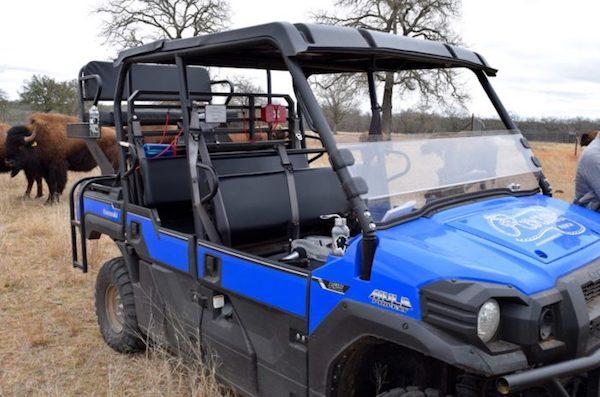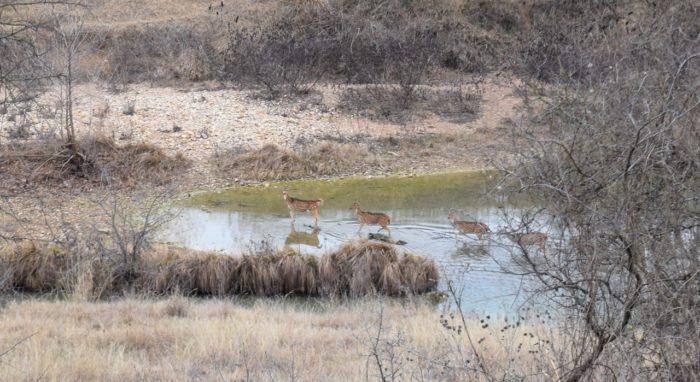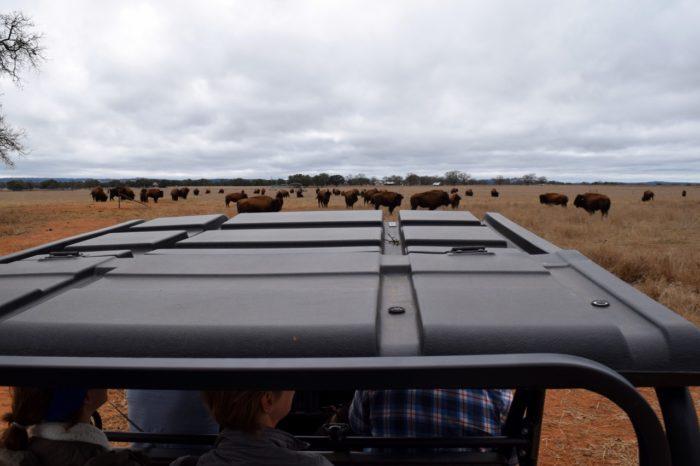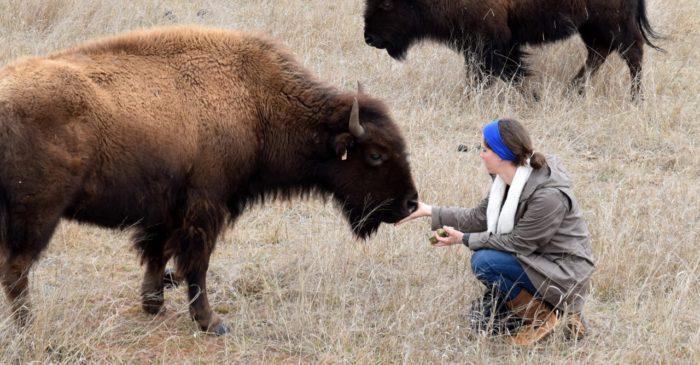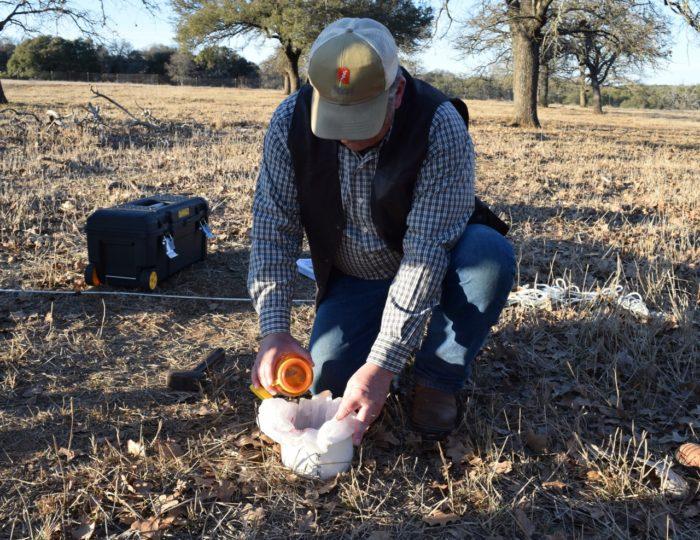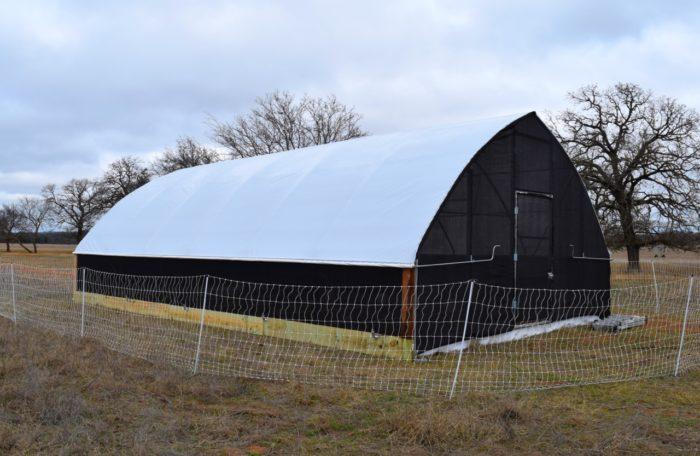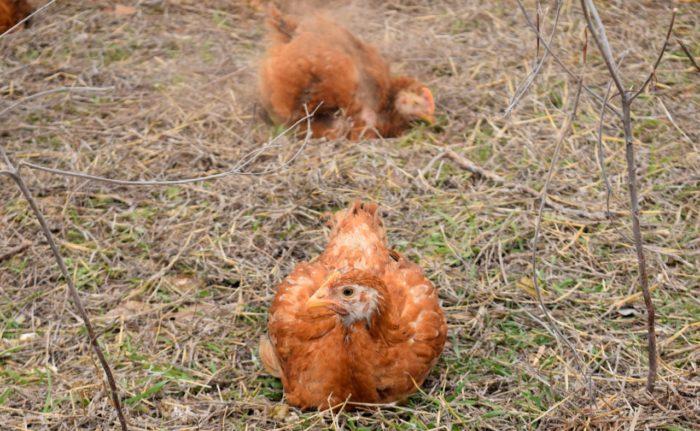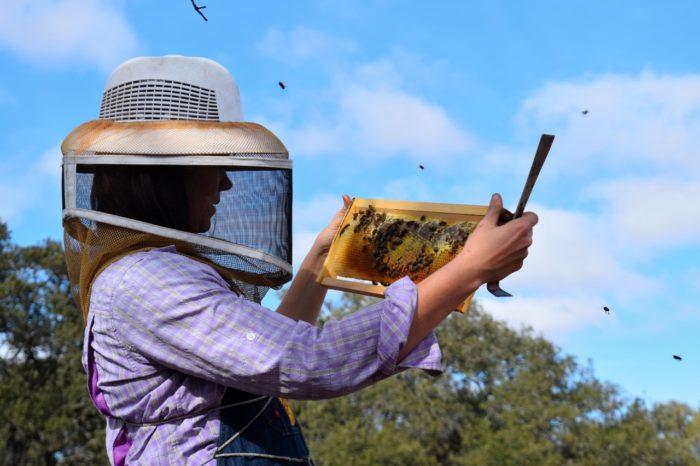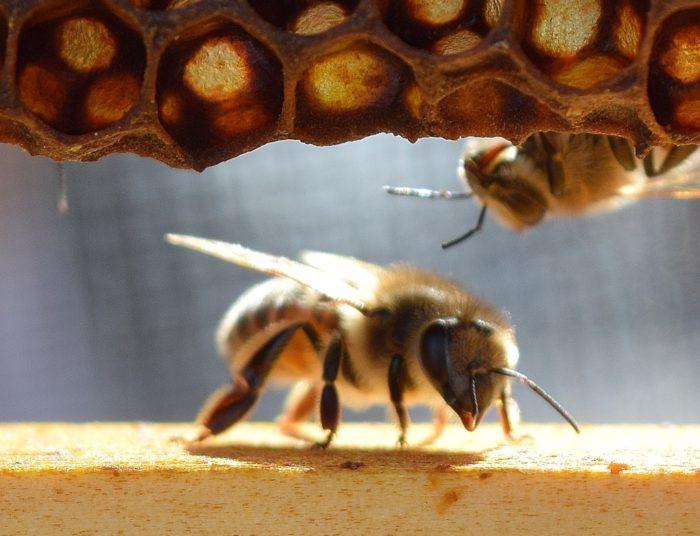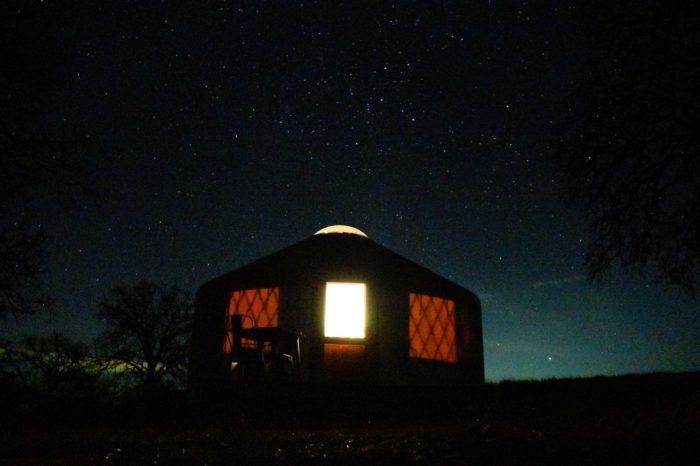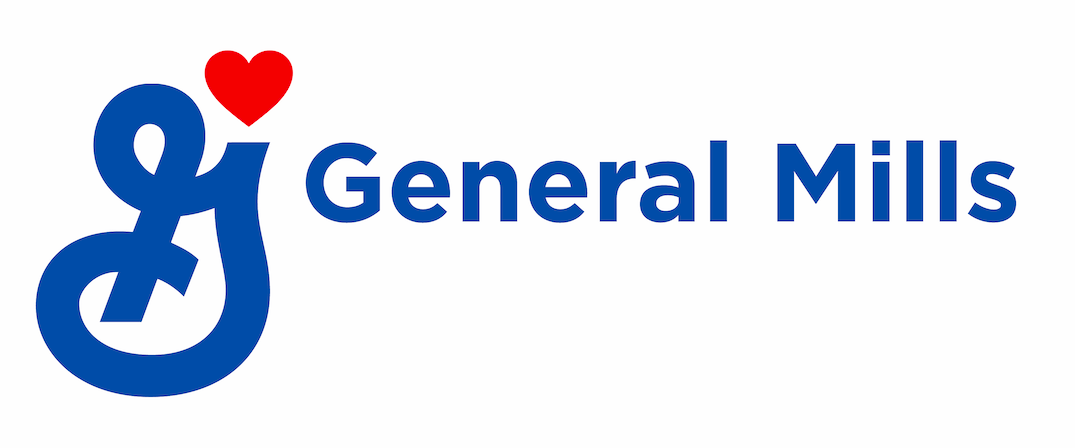EPIC’s ROAM Ranch: A Photo Journey
EPIC’s ROAM Ranch: A photo journey
Perched on the hunting seat of a bright blue Kawasaki Mule, my tour through ROAM Ranch feels like a safari.
The 450-acre ranch outside of Austin, Texas, is the brainchild of Taylor Collins and Katie Forrest, the founders of EPIC Provisions, and it is the embodiment of their brand’s mission.
ROAM is an experimental and educational ranch dedicated to the practice of regenerative agriculture, a way of growing food that strives for continuous improvement in soil, water, wildlife, and community. (Watch a video overview of the ranch).
Hands clung to the railing of the Mule, I’m set to learn about the mission of the ranch and the vision for bringing it to life.
We scare a rafter of wild turkeys as we take off for a large, open field that, until Collins and Forrest bought the ranch last year, was intensively farmed to grow milo (also called sorghum) and cotton. They’ve been letting the land rest untouched, and grasses have started to colonize the field, but the scars of past farming practices are still evident in the patches of bare soil and signs of erosion.
Collins motions to a tiny dormant grass that emerged last year. The top of its roots stand half an inch above the bare surrounding ground, a sign that this field’s precious topsoil has blown or washed away. By coaxing back the native perennial grasses, and through carefully planned grazing by cattle, Collins and Forrest hope to begin building back the soil.
Speeding from the field, we chase a herd of axis deer to the Pedernales River that borders the ranch on the south side.
“Three axis deer eat the same amount of grass as a pair of bison,” Collins yells back to his passengers.
While most ranchers are concerned about wildlife being on their land for loss of profit, an essential goal of the ranch is to balance wildlife and livestock production.
Collins and Forrest hope to foster a healthy population of predators – including hawks, coyotes, bobcats, and permitted human hunters – to keep the deer population in check.
Axis deer happen to be the most delicious wild game around, as I discovered later in a lunchtime chili that featured a deer Collins hunted himself, and was prepared by EPIC office manager/interior designer/chef/party planner Ashley Leline.
Along the cliff which lines the river, Collins points out a small mesquite, a shrub with inch-long spikes that is the bane of ranchers in this region.
Forrest lists the common ways of dealing with the voracious tree, which can take over large stretches of grassland.
“You can rip them out with machinery, but that’s time-intensive and exposes the soil. Most people around here spray them with a mix of diesel fuel and herbicides,” she says.
I ask how they plan to deal with the mesquite at ROAM. “Goats,” Collins says. “They’ll eat it.”
Carefully managed animal impact is the cornerstone of the ranch’s plans to regenerate the land, and there are few animals that have as much impact as bison.
A huge brown huddle comes into focus as we approach the high fences of the bison paddock.
Bison used to roam by the millions throughout the Great Plains, and the native grassland species evolved with the impact of their migratory grazing. Collins and Forrest plan to mimic the effect of these migrations by deliberately moving the bison in a dense herd throughout the ranch.
Collins stops the Mule in front of the herd and the rest of the group hops out. I decide to stay put in my perch as 70 hulking bison come near. He shakes out a bag of alfalfa treats for the herd and Forrest makes a beeline to hand-feed her favorite bison, Poppy. Still a young herd, these animals will double in size within the next year.
Collins begins to talk about decomposition, and the ecological role of the bison becomes clear. Inspired by the teachings of biologist Allan Savory, Collins and Forrest plan to frequently move dense herds of bison, cattle, and goats throughout the pastures, with the help of full-time ranch manager Zach Peoples.
The impact of hooves and grazing helps stimulate nutrient cycling through decomposition of plant litter and dung, which helps return carbon to the soil.
By allowing each field to rest while the animals graze elsewhere, the plants are allowed to recover, which prevents overgrazing and improves the health of the pasture.
Well-managed grasslands can sequester enormous amounts of carbon from the atmosphere into the soil, which helps mitigate climate change and makes the pasture more resilient to droughts and floods.
The more carbon soil holds, the more sponge-like it becomes, giving it the ability to absorb and hold onto water. With the help of Byron Shelton and Chris Kerston, advisors from the Savory Institute, Collins and Forrest will closely monitor the changes in the soil, water, and wildlife that result from their management.
After spending some time with the remarkably docile bison (which, for the record, I eventually observed from beyond the safety of the Mule), we skirt across the grassland and stop at a large, house-like enclosure – a mobile chicken coop – or, more accurately, a chick-and-duckling coop.
“They get to be birds and do bird things,” says Robby Sansom, CFO/COO of EPIC.
The enclosure, which is designed to keep the little birds cool and safe from predators, is moved once a day to a different stretch of pasture so they can eat a new patch of grass and look for a fresh set of bugs.
Collins and Forrest hope to teach willing visitors how to harvest chickens, and send them home with fresh meat and a new respect for the animals they consume. They have a passion for reconnecting people with their food.
“Without that connection, it’s easier to disrespect the land,” Forrest says.
Collins adds, “Seeing first hand where your food comes from helps you form an opinion about what kinds of agriculture you want to support. It also makes you think harder about food waste.”
The final leg of the ranch tour featured the smallest livestock of all: honeybees.
Collins and Forrest manage four hives supporting 200,000 bees with the help of beekeeper and former CIA agent, Tara Chapman of the Austin-based company, Two Hives Honey. Tara hands out fresh honey from the hive – deliciously sweet, and pleasantly chewy from the honeycomb.
In addition to providing honey and beeswax, the bees will help pollinate the wildflowers Collins and Forrest hope to establish throughout the ranch.
As the tour ends and the sun dips below the clouds on the horizon, we return to where we began, at a small construction site that will soon be ROAM’s main gathering area.
Facing what will become a courtyard and garden, there are two rectangular buildings, one with two rooms for sleeping, and the other with a large open room containing a kitchen, dining table, and space for lounging. It is here, gathered around a beautiful meal of grass fed bison and roasted pepper tacos, that I learn regenerative agriculture is not only about the health of the land, but also the strengthening of community.
Perhaps inspired by tradition, or simply the warmth of the moment, Collins invites each person to share something for which they are grateful. I think about how exciting it was to see bison up close, and to taste honey straight from the hive. I also feel inspired to see these people, not much older than myself, dedicate their lives to improving the care of animals and the land.
But it is for the sense of community that I feel truly grateful. The EPIC team is tight knit, but welcoming and inclusive. I’m thankful to be a part of their mission, and part of their community.
As I settle into bed in a yurt that overlooks the bison pasture, I think about the monumental task ahead. It will take years of hard work to establish the native grasses, decades to restore the soil, and generations to reconnect people with their food.
I try to imagine how Collins and Forrest mustered the optimism commensurate with the idealism of ROAM.
Lying under a dense sky of stars, I remember the question posed by a sign on the back of the Mule. It read: “WHAT GOOD SHALL I DO THIS DAY?”
For more information, visit ROAMRanch.com.
Editor’s note: Hear Rosenzweig talk about his role as a soil scientist at General Mills, in EPIC’s latest Meatcast episode (40:12 mark).

